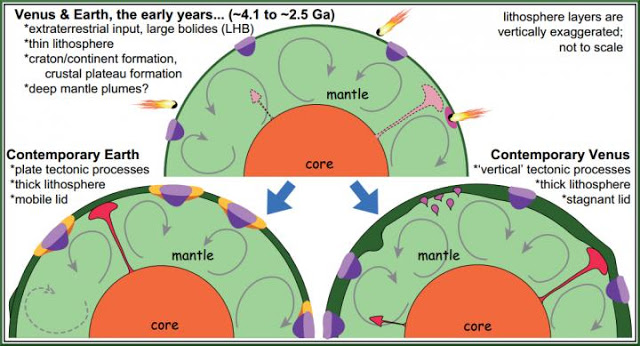
Earth was a completely different planet more than 2.5 billion years ago. Little is known about this critical time when cratonic continental seeds formed; life emerged; and precious mineral resources concentrated. Our knowledge is limited because plate tectonic processes destroyed most of this early record. In contrast, Earth’s sister, Venus — similar in size, density, bulk composition, and distance from the Sun — never developed plate tectonics.
Venus also lacks a water cycle. Like siblings, Venus and Earth were most similar in their youth; however, Venus preserves a more complete geological record of its infancy, including both exogenic and endogenic features. Applying clues from Venus, Vicky L. Hansen proposes a new hypothesis for the formation of Earth’s cratons. Large bolides pierced early thin lithosphere causing massive partial melting in the ductile mantle; melt escaped upward, forming cratonic crust; meanwhile strong, dry, buoyant melt residue formed cratonic roots, serving as unique buoyant life preservers during future plate-tectonic recycling.
Reference:
Impact origin of Archean cratons
V.L. Hansen, Department of Earth and Environmental Sciences, University of Minnesota Duluth, 1114 Kirby Drive, Duluth, Minnesota 55218, USA. Published online ahead of print on 24 Aug. 2015; DOI: 10.1130/L371.1
Note: The above post is reprinted from materials provided by Geological Society of America.










